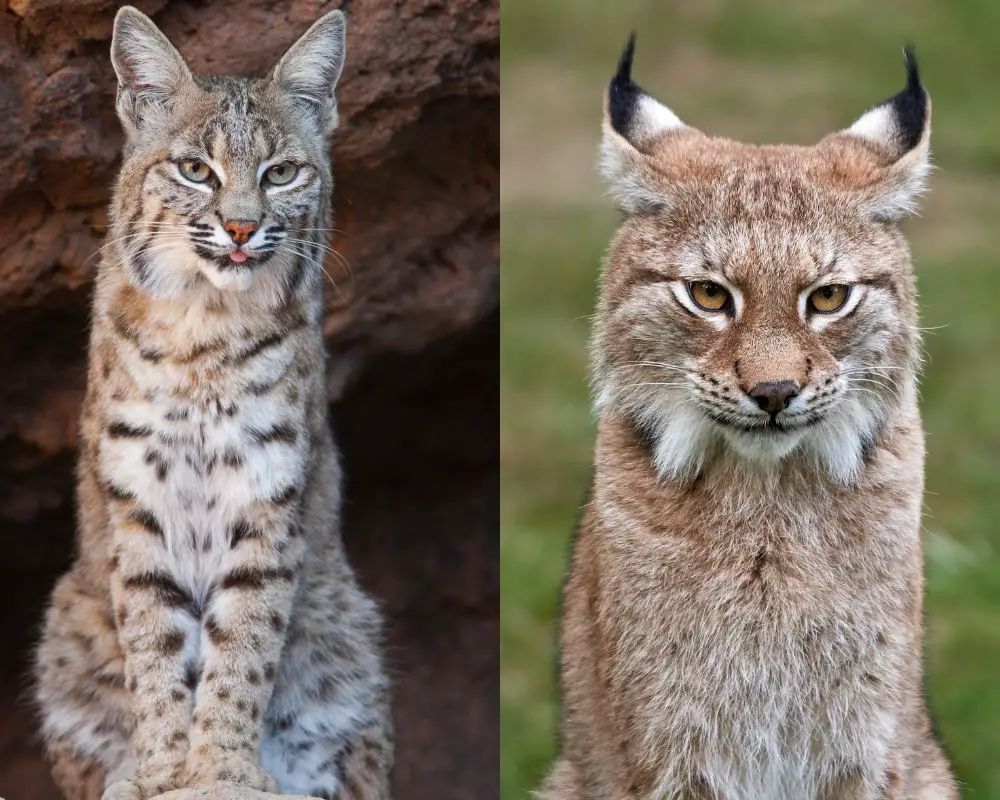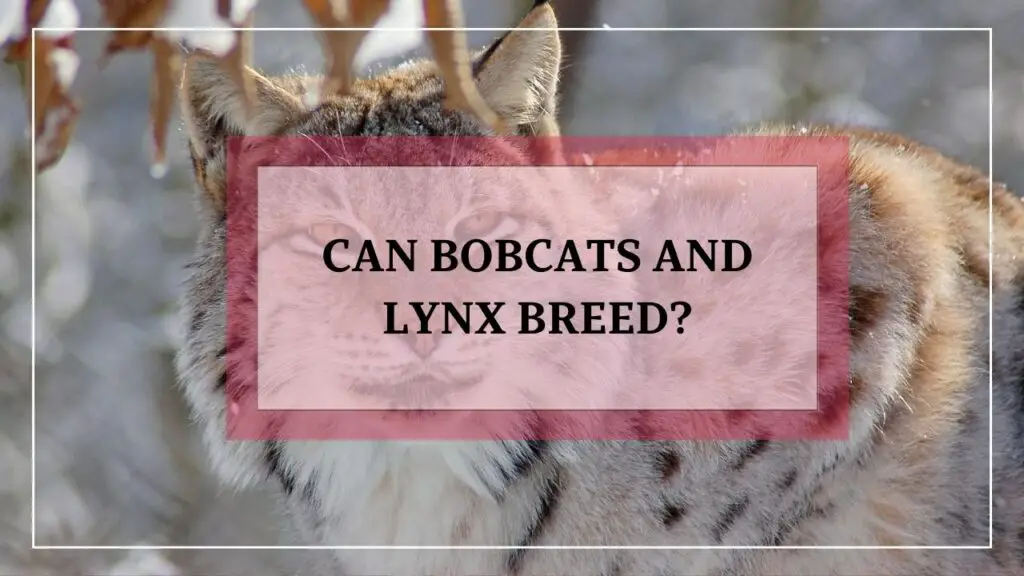Bobcats and Lynx are two of the most recognizable species of wild cats found in North America. These feline predators are known for their distinctive physical features and behaviors, which make them easily distinguishable from each other.
However, there has been a growing interest in the possibility of Bobcats and Lynx breeding. In this blog post, we will examine the science behind Bobcat and Lynx hybridization, and explore the factors that can contribute to this phenomenon.
By the end of this post, you will have a better understanding of the potential for these two species to breed, and what this means for the future of feline conservation.
Bobcats and lynx can breed and produce offspring, known as hybrids, but it is a rare occurrence in the wild and is usually limited to captive breeding situations. Inbreeding can have negative impacts on genetic diversity, natural populations, and conservation efforts, and it is important to monitor and manage it to minimize potential negative effects.
However, to have a better understanding, we need more than this short answer:
Can Bobcats and Lynx Breed?
Interbreeding Capabilities
As previously mentioned, Bobcats and lynxes are capable of interbreeding and producing offspring, known as hybrids.
Hybridization
Hybridization between bobcats and lynx has been documented in captive breeding situations, where individuals of different species are kept in close proximity. In the wild, the limited distribution of lynxes and their specific habitat requirements make it unlikely for interbreeding to occur.[1]
Historical Instances Of Interbreeding
There have been several documented cases of hybridization between bobcats and lynx in captive breeding situations. These instances have provided valuable information about the interbreeding capabilities and the offspring produced from such breeding.
Bobcats And Lynx

To better understand the possibility of Bobcats and Lynx breeding, we’ve to study some factors first including how close these animals are to each other. The closeness depends on several elements including:
Physical Characteristics
Bobcats are medium-sized wild cats native to North America and are known for their distinctive appearance. They have short tails, tufted ears, and a distinctive pattern of spots and stripes on their fur. Lynx, on the other hand, are larger wild cats that are native to the boreal forests of the northern hemisphere. They have distinctive ear tufts, short tails, and large paws that are covered in fur to help them traverse snow.
Natural Habitat
Bobcats are found in a wide range of habitats including forests, deserts, swamps, and suburban areas. They are highly adaptable and can survive in a variety of environments. Lynx, on the other hand, is found in boreal forests and is highly dependent on their natural habitat for survival. They need large areas of forest to hunt and raise their young.
Distribution And Population
Bobcats are found throughout North America and are widely distributed. They have a large population and are considered to be a common species. Lynx, on the other hand, have a more limited distribution and are found in the boreal forests of North America, Europe, and Asia. Their populations are lower and they are considered to be a species of conservation concern in some areas.
Taxonomy and Evolution
Now, let’s jump to what science actually says about these different breeds of animals:
Scientific Classification
Bobcats belong to the genus Lynx and the species Rufus, while lynx belong to the genus Lynx and have four recognized species – Lynx lynx, Lynx pardinus, Lynx canadensis, and Lynx rufus.
Phylogenetic Relationships
Bobcats and lynx are closely related and belong to the same genus. However, they are considered to be distinct species with different physical, ecological, and behavioral characteristics.
Historical Evolution
The evolutionary history of bobcats and lynxes is still being studied and understood. However, it is believed that they evolved from a common ancestor and have diverged into separate species over time. Understanding the evolutionary history of these species can provide important insights into their interbreeding capabilities.
Consequences of This Inbreeding
But, what do you think can be the consequences of such interbreeding? Let’s take a deeper look:
Impact On Genetic Diversity
Interbreeding between bobcats and lynxes can result in a decrease in genetic diversity. This is because hybrid individuals have a combination of genes from both parent species, which can reduce the distinctiveness of each species and its unique genetic makeup.
Effects On Natural Populations
Interbreeding between bobcats and lynx can have negative effects on natural populations. Hybrid individuals may have difficulty adapting to the different habitats and environments of their parent species, which can impact their survival and reproductive success. This, in turn, can affect the stability and health of natural populations.
Conservation Concerns
Interbreeding between bobcats and lynxes can raise concerns for conservation efforts. Hybrid individuals can introduce new genes into wild populations, which can have negative effects on the long-term viability and conservation of both parent species. It is important to monitor and manage interbreeding between bobcats and lynx to minimize the potential negative impacts on the genetic diversity and health of wild populations.
The Bottom Line
In conclusion, the hybridization between Bobcats and Lynx is a rare occurrence, mostly limited to captive breeding situations.
However, it is important to understand the potential consequences of this interbreeding as it can have negative impacts on genetic diversity, natural populations, and conservation efforts. It is vital to monitor and manage this phenomenon to ensure the preservation of both parent species and maintain their distinctiveness.
While these two species are closely related and belong to the same genus, they have distinct physical, ecological, and behavioral characteristics. Understanding the evolutionary history of Bobcats and Lynx can provide valuable insights into their interbreeding capabilities and the importance of protecting these magnificent creatures.
And if you’re interested, there is also a blog post about can bobcats and mountain lions breed.

